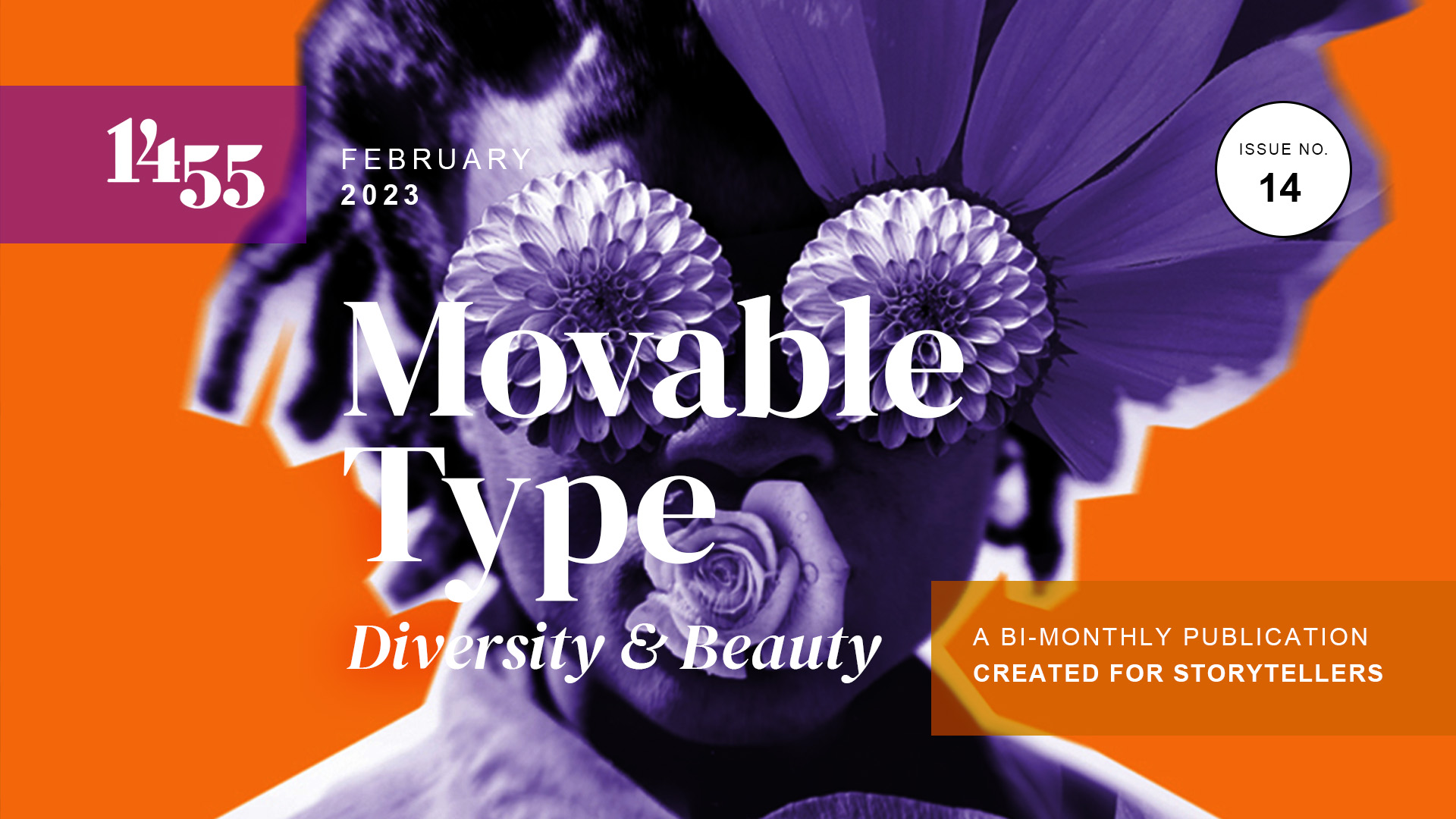Sarah Birnbach
Honoring 19th-Century Black Women Writers
Prior to the Civil War, the majority of Black Americans in the United States were forbidden to read or write. Even after the war, significant impediments to learning and literacy remained. Nevertheless, some Black men and women of the nineteenth century learned to both read and write.
The nineteenth century was a formative period in African-American literary history. Unfortunately, much of this body of literature remained, until very recently, relatively inaccessible. I am inspired by the stories of lesser known Black female writers of the 19th century—women whose written records give light to their personal history and the history of our country. In this, Black History Month, I am sharing the stories of some of these women and hoping their stories will inspire you as well.
Octavia Victoria Rogers Albert (1853-1890) was born into slavery in 1853 in Oglethorpe, Georgia. In 1888, as the wife of a Methodist minister, she became a community and religious leader. Members of the community would gather at her home and share stories of their lives as slaves. She captured these stories in a book, The House of Bondage, which was published after her death in 1890. The House of Bondage was one of the first collections of the stories and memories of former enslaved women.
Anna Julia Haywood Cooper (1858-1964) was born into slavery. At age nine, she received a scholarship and attended Saint Augustine’s Normal School and collegiate Institute in Raleigh, North Carolina. There she distinguished herself in liberal arts and math and science while she was trained to teach formerly enslaved and their families. Her first book, A Voice from the South: By a Black Woman of the South, published in 1892, is considered one of the first articulations of Black feminism. The book advanced a vision of self-determination through education for Black women. She began her work to advance educational opportunities for Black students as principal of M Street High School in Washington, DC.
Fanny Jackson Coppin (1837-1913) was born into slavery but her aunt purchased her freedom when she was 12 years old. She enrolled at Oberlin College, the first college in America open to Blacks. While there, she established a school to teach freed slaves. In 1869, she became the nation’s first Black woman to be appointed a school principal at the Institute for Colored Youth (the forerunner to Cheyney University of Pennsylvania). A few years later, she was promoted by the Philadelphia Board of Education to superintendent, becoming the country’s first Black superintendent of a school district. Her autobiography, Reminiscences of School Life, and Hints on Teaching, was published in 1913. In 1926, a Baltimore school for teacher training, originally named Fanny Jackson Coppin Normal School in honor of her contribution to teacher training, became what is now Coppin State University in Baltimore.
Lucy A. Delany (1830-1891) was a former slave whose mother sued for her daughter’s freedom in 1844 and won. Delaney’s memoir, From the Darkness Cometh the Light, or, Struggles for Freedom, is the only first-person account of a “freedom suit” and one of the few slave narratives published in the post-Emancipation period. From the Darkness emphasizes the strength of the Blacks who suffered under slavery, rather than recount its abuses.
With the rise of the mid-20th-century Civil Rights Movement and feminism, and new interest in historic Black and women’s literature, her book was reprinted in 1988 in the collection Six Women’s Slave Narratives by Oxford University Press. It is available in full for free online by Project Gutenberg, as well as by the University of North Carolina in its Documents of the American South website.
Frances Watkins Harper (1825-1911) was born to free Black parents. She attended the Watkins Academy for Negro Youth until she was 13 years old, when she took a job as a nursemaid and seamstress for a White family that owned a bookstore. Her love for books blossomed as she spent any free time she had in the bookshop.
By age 21, Harper wrote her first small volume of poetry called Forest Leaves. When she was 26 years old, she moved in with abolitionists in Pennsylvania and began writing poetry for antislavery newspapers. Her poem, “Eliza Harris,” was published in The Liberator and in Frederick Douglass’ newspaper. By the time she left Philadelphia in 1854, she had compiled her second small volume of poetry called Poems on Miscellaneous Subjects with an introduction by abolitionist William Lloyd Garrison. This second collection sold more than 10,000 copies—a record for a poetry collection by a writer.
For the next eight years, Harper traveled across the United States and Canada speaking against slavery and advancing the struggle for women’s rights. She included her observations from her travels in her writings and began to publish novels, short stories, and poetry focused on issues of racism, feminism and classism. In 1859, Harper published a short story about women’s education in the Anglo-African Magazine called “The Two Offers.” This was the first short story published by a Black American woman.
In 1866, Harper spoke at the National Woman’s Rights Convention in New York. Her famous speech entitled, “We Are All Bound Up Together,” emphasized Black women’s double burden of racism and sexism, and stressed that the fight for women’s suffrage must include suffrage for Black Americans. That same year, Harper helped to establish the National Association of Colored Women.
Through her poetry, fiction and nonfiction writing, Harper inspired Americans to create change in society. One of her most famous quotes, “…no nation can gain its full measure of enlightenment…if one-half of it is free and the other half is fettered” encapsulates her philosophy as an educator, writer, and social and political activist.
Pauline Elizabeth Hopkins (1859-1930) was born in Portland, Maine to free parents of color. Her high-achieving family encouraged her academically, which led her to develop an appreciation for literature.
While enrolled in a leading secondary institution in Boston, Hopkins, then 15, entered an essay competition for Black students that was hosted by former slave William Wells Brown, considered at the time to be the nation’s premier Black novelist. Hopkins placed first in the competition and received the $10 prize for her essay, “Evils of Intemperance and Their Remedies.”
Writing remained her passion and in 1900 her short story, “Talma Gordon,” was published, becoming the first Black American mystery story. She explored the difficulties faced by Blacks amid the racist violence of post-Civil War America in her first novel, Contending Forces: A Romance Illustrative of Negro Life North and South, also published in 1900. Hopkins authored her first short piece of published fiction, “The Mystery Within Us,” which appeared in Colored American Magazine.
By 1902, Hopkins had become the editor of Colored American and during this period, she also authored three novels: Hagar’s Daughter: A Story of Southern Caste Prejudice (1901); Winona: A Tale of Negro Life in the South and Southwest (1902); and Of One Blood, or, the Hidden Self (1903). In 1915, Hopkins became the first Black editor of New Era Magazine, one of the leading journals of the period. The New Era folded in 1918, and Hopkins ended her brief but brilliant literary career. Pauline Hopkins is considered a pioneer in her use of the romantic novel to explore social and racial themes.
Harriet Jacobs (1813-1897) was born into slavery in Edenton, North Carolina. After her mother died, she lived with her mother’s owner, Margaret Horniblow, who taught her to read and write. After Margaret Horniblow died in 1825, Harriet went into hiding for seven years to avoid the unwanted sexual advances of her new owner.
After finally escaping to the free North, she connected with abolitionist and feminist reformers. In June 1853, Jacobs read a defense of slavery in an old newspaper. Written by the wife of former president John Tyler, the text claimed that household slaves were “well clothed and happy”. Jacobs spent the whole night writing a reply, which she sent to the New York Tribune. Her letter, signed “A Fugitive Slave”, published on June 21, was her first text to be printed. Her biographer, Jean Fagan Yellin, wrote, “When the letter was printed …, an author was born.”
Shortly thereafter, Amy Post, abolitionist and women’s rights activist, suggested that Jacobs write her life story. Jacobs felt a moral obligation to tell her story to help build public support for the antislavery cause and thus save others from suffering a similar fate. Her autobiography, Incidents in the Life of a Slave Girl, published in 1861 under the pseudonym Linda Brent, is now considered an American classic. The constant danger for herself and other slave mothers of being separated from their children is an important theme in the autobiography. Rather than the contempt Jacobs had feared, the book was well received by critics.
In the spring of 1862, Harriet Jacobs went to Washington, D.C. and Alexandria, Virginia. She summarized her experiences and described fugitives’ misery in a report entitled Life among the Contrabands, published that September in William Lloyd Garrison’s The Liberator.
Jacobs emphasized her conviction that freedmen would be able to build self-determined lives, if they got the necessary support.
Elizabeth Hobbs Keckley (1818-1907) was born into slavery in 1818 in Dinwiddie County, Virginia. In 1847, she accompanied the family of her master’s daughter—Ann Burwell Garland—to St. Louis. There Hobbs began work as a seamstress and dressmaker, skills she had learned from her mother. Her work helped support the entire Garland family.
Hobbs’s reputation as a skilled dressmaker grew quickly and her patrons soon included some of St. Louis’s most elite citizens. In 1852 she married James Keckley.
On August 10, 1855, with $1200 borrowed from some of her wealthy patrons, Elizabeth Keckley secured her freedom. Within five years, Elizabeth left her husband, settled in Washington, DC, and had repaid all the money she had borrowed.
In Washington, D.C., Keckley built a successful dressmaking career and became acquainted with Mary Lincoln. Her work for and friendship with Mary Lincoln gave her a unique view of events which she chronicled in her book, Behind the Scenes By Elizabeth Keckley, Formerly a Slave, But More Recently Modiste, and Friend to Mrs. Abraham Lincoln, Or, Thirty Years a Slave, and Four Years in the White House (1868).
Keckley became a prominent figure in D.C.’s free Black community. After Lincoln’s assassination, Keckley stayed with the first lady for a time, but the publication of her book, in which she revealed private details about life inside the White House, was controversial and strained her relationship with Mary Lincoln. The negative reaction to the book in D.C.’s White community affected Keckley’s ability to earn a living.
The purple velvet gown, designed and made by Keckley and worn by Mary Lincoln at her husband’s second inauguration, is on display at the Smithsonian’s American History Museum.
N.F. Mossell (1865-1948) Gertrude Emily Hicks Bustill was born into a family of Black Quakers in 1855. She was taught and encouraged to be educated at a young age by her father.
She began her writing career as a journalist. Her work, which focused on Black women, was published in newspapers and magazines which have not yet been recovered. She served as the women’s editor of the New York Age from 1885 to 1889, and of the Indianapolis World from 1891 to 1892. She strongly supported the development of Black newspapers, advocated for more women to enter journalism, and advocated for racial equality.
In 1893 she married Dr. Nathan Francis Mossell, a graduate of the University of Pennsylvania Medical School and the founder of the Frederick Douglass Memorial Hospital in Philadelphia in 1893.
Mrs. Mossell used her husband’s initials—N.F. —“to defend and celebrate Black womanhood without disrupting the delicate balance of Black male-female relations or challenging masculine authority.”
In 1894, Mrs. Mossell published The Work of the Afro-American Woman. The second edition of the book was published in 1988 as part of The Schomburg Library of Nineteenth-Century Black Women Writers. The first section includes a series of essays and the second contains a collection of poems centering around the theme of racial uplift in the United States. The book shares the achievements of Black women who are “educators, writers, journalists, dramatics, composers, missionaries, and businesswomen.”
You can read the first edition of the book here.
Priscilla Jane Thompson (1871-1942) was born in Rossmoyne, Ohio to two slaves who escaped to freedom on the Underground Railroad. Her parents raised her and her siblings to be educated and immersed in the arts.
Inspired by the stories of her parents and other Black folks in the Cincinnati area, Thompson wrote cutting verses on slavery and the injustices that survived with abolition. She self-published two books of poetry, Ethiope Lays (1900) and Gleanings of Quiet Hours (1907). The former was featured at the Paris Exposition of 1900 in the “Collection of Colored Literature” and won significant praise. In her introductions, Priscilla made known her intentions for writing: “to bring true Black characters to life with honesty and depth.” She was responding to the stereotypes and racism embedded deep into American society. She fought for the Black woman’s place within the literary world. Her poetry is considered an ode to the wisdom and beauty of the Black woman.
Thompson began showcasing her poetry at expositions where activist Booker T. Washington was often the featured guest. She is considered to have inspired the Harlem Renaissance.
Sojourner Truth (1797-1883) whose birth name was Isabella “Belle” Baumfree, was born into slavery in Swartkill, New York. She was bought and sold four times, and subjected to harsh physical labor and violent punishments.
Late in 1826 Bumfree escaped to freedom with her infant daughter and found her way to the home of abolitionists in New Paltz. She lived with them until the New York State Emancipation Act was approved on July 4, 1827.
Baumfree learned that her son Peter, then five years old, had been illegally resold to an owner in Alabama. She took the issue to court and in 1828, after months of legal proceedings, got her son back, and became the first Black women to go to court against a White man and win such a case.
As an itinerant preacher, Baumfree met abolitionists William Lloyd Garrison and Frederick Douglass who encouraged her to give speeches about the evils of slavery. On June 1, 1843, Pentecost Sunday, she changed her name to Sojourner Truth claiming the Spirit of God called on her to preach the truth.
She never learned to read or write. In 1850, she dictated what would become her autobiography—The Narrative of Sojourner Truth—to Olive Gilbert, who assisted in its publication. Truth survived on sales of the book, which also brought her national recognition.
In 1851, Truth began a lecture tour that included a women’s rights conference in Akron, Ohio, where she extemporaneously delivered her famous “Ain’t I a Woman?” speech. In it, she challenged prevailing notions of racial and gender inferiority and inequality by reminding listeners of her combined strength (Truth was nearly six feet tall) and female status.
During the 1850’s, she continued speaking nationally and helping slaves escape to freedom. After the Civil War, she worked to help freed slaves find jobs and build new lives. She lobbied against segregation, and in the mid-1860s, when a streetcar conductor tried to violently block her from riding, she ensured his arrest and won her subsequent case.
A memorial bust of Truth was unveiled in 2009 in Emancipation Hall in the U.S. Capitol Visitor’s Center. She is the first Black American woman to have a statue in the Capitol building. In 2014, Truth was included in Smithsonian magazine’s list of the “100 Most Significant Americans of All Time”.
Conclusion
These women are just a small sample of the earliest Black American women writers. They paved the way for more contemporary authors such as Maya Angelou, Roxane Gay, bell hooks, Toni Morrison, Alice Walker, Jesmyn Ward, and Isabel Wilkerson, to name but a few.
These women authors have brought the Black woman’s experience to life for millions of readers. Their autobiographical accounts reveal the bigotry and discrimination they faced while growing up. To better understand the history of racial inequality in our country, consider reading these and other works and supporting the writing of all Black authors.

SARAH BIRNBACH
Sarah Birnbach embarked on her encore career as a non-fiction writer in 2015 after successful careers as a human resource management consultant and a licensed clinical social worker. As a sought-after motivational speaker, she has delivered over 500 presentations. She is a five-time award winner from the Soul-Making Keats Literary Competition, a program of the National League of American Pen Women, and a two-time award winner in Bethesda Magazine’s essay contest. Her stories have been published in numerous magazines and professional journals, as well as The Washington Jewish Week and The Jerusalem Post. Her debut memoir, A Daughter’s Kaddish: My Year of Grief, Devotion, and Healing was published by Wonderwell Press in September 2022. Sarah “Combating Racism” blog posts can be found on her website at www.sarahbirnbach.com. An active member of the Women’s National Book Association and the National Association of Memoir Writers, she lives in Rockville, Maryland.
Website: sarahbirnbach.com
Twitter: @sarah_birnbach
Instagram: @Sarah.Birnbach
Facebook: facebook.com/SarahBirnbachWriterAuthor


